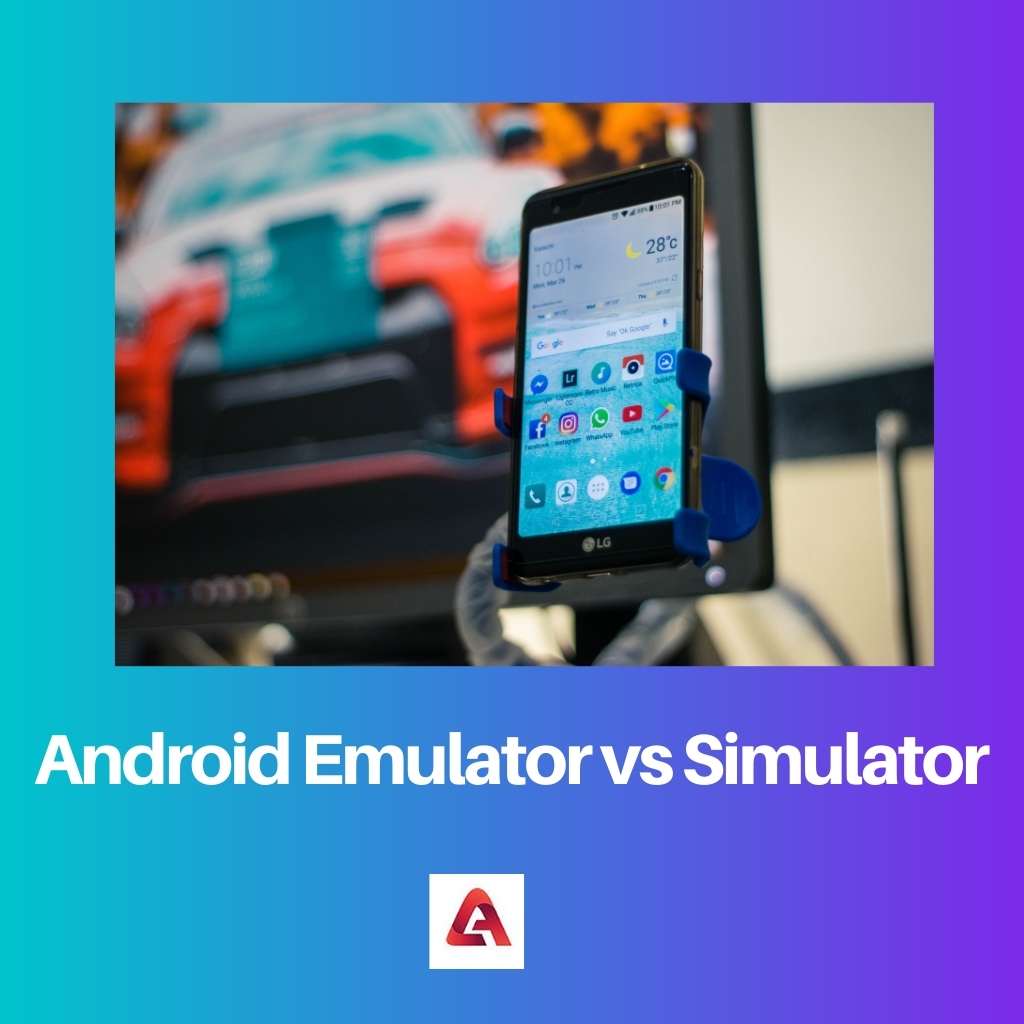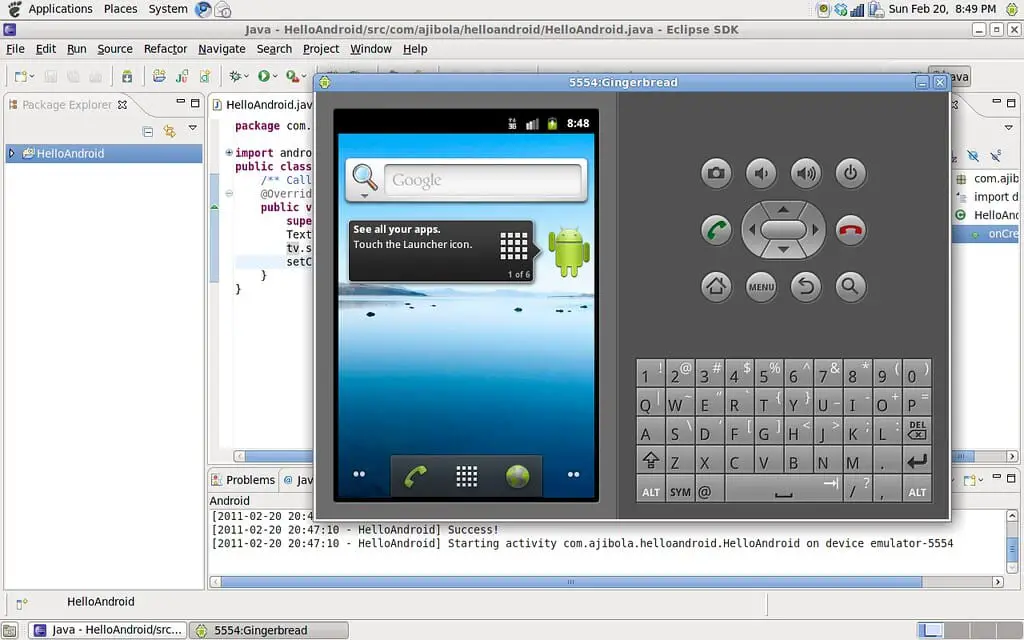Both the terminology “emulator” and “simulator” are used in the assessment universe, particularly in cellphone checking. Every item production business conducts an assessment to ensure its characteristics before releasing it to the market.
The assessment methods or test cases ensure that each and every component functions properly and without faults.
Key Takeaways
- An emulator is software that mimics hardware, while a simulator imitates the behavior of an actual device.
- An emulator is used for testing software on different devices, while a simulator is used to test software behavior in different environments.
- Emulators are slower than simulators but provide a more accurate representation of the target device.
Android Emulator vs Simulator
Andriod emulator emulates both the software and hardware environment of an Android device, while a simulator only simulates the software environment. An emulator can be used for testing the functionality, while a simulator is used primarily for testing the user interface and user experience.

The Android Emulator emulates Android gadgets on your desktop, allowing you to evaluate your program on a range of handsets and Android API versions minus the requirement for each real device.
The emulator includes pre-configured settings for many Android phones, laptops, Wear OS, as well as Android TV platforms. The origin of the emulation influences the emulator’s security.
A simulator is a piece of software application that enables allows your system to execute programs designed for a distinct operational platform.
They are primarily intended for iPhone & iPad systems, as opposed to Android smartphones, which may be readily imitated.
This creates a problem for developers because they must either develop on the MacBook or modularize macOS on their current computers.
Comparison Table
| Parameters of Comparison | Android Emulator | Simulator |
|---|---|---|
| Work | Software, hardware, and an operating system for mobile devices | The device’s internal functionality is not emulated, and it does not imitate hardware. |
| Internal Structure | It is implemented in assembly language at the machine level. | It is constructed in a sophisticated language. |
| Debugging | It is appropriate for debugging. | It is not appropriate for debugging. |
| Performance | Emulators are quite sluggish. | It is speedier than emulators. |
| Instances | Google’s Android SDK | Apple’s iOS Simulator |
What is an Android Emulator?
An Android emulator is a program that uses software as well as hardware on your desktop to generate simulated Android gadgets.
Android emulators are software applications that simulate the hardware as well as software of an Android phone or tablet for creation and experimentation.
Android emulators will operate on your Mac and PC, allowing you to develop Android programs while sitting at your work.
The most common purpose for using android emulators is to enjoy or check videogames, but you may also utilize it to execute any app accessible in the Google Play Store.
For instance, if you operate your Instagram application in an emulator, you may upload photographs straight from your laptop, which would normally be difficult. Emulators resemble the design of the machine you’re trying to emulate.
As a result, based on your requirements, you may discover emulators for a wide range of software as well as hardware. After the release of version 25.3.0, Android separated its emulator from its SDK capabilities.
Trying to set up your Android emulator can be difficult, but it is not insurmountable.
You may use the Android emulator to run interferometric experiments, such as checking that a code accesses core assets and app-specific documents and evaluating the operation of your outside requirements.
Emulators also aid with app speed assessment by ensuring that engagements are seamless and that programs utilize device capabilities within the constraints set.
Make careful to assess your device’s CPU and graphical capacities for appropriate readings.

What is a Simulator?
Simulation, which is essentially a replica of a process, is a more general notion that is also utilized outside of the domain of technology.
It is also employed in computers in a similar sense as a mimic of a technology platform but not the physical infrastructure.
The goal of a simulator is to imitate an item’s interior status as closely as feasible to the inner representation of an item.
Simulators are preferred if the development team wants to evaluate the internal behavior of the mobile device, such as its underlying hardware, software, and so on.
Simulators are developed in greater programming technologies. Simulators might be challenging to use for debugging purposes.
A simulator is simply a portion of the original program that has been re-implemented. Simulators are frequently used for goal analysis, training, and investigation.
A simulator can mimic several of the behaviors of the end consumer, such as clicking buttons, executing apps, and swiping the screen.
A simulator is intended to simulate an atmosphere that has all of the software parameters and setups that will be present in the entire manufacturing context of a program.
Simulators can be developed using high-level development tools since they merely construct software contexts.
Simulators are best suited for software development situations in which you want to ensure that the application functions as intended when communicating with outside apps or surroundings.
Main Differences Between Android Emulator and Simulator
- Because the emulator must interface with the hardware components of the Android device, it must be implemented in machine code. However, when it relates to the simulator, it’s all about the equipment. As a result, it might be developed in any of the desired high-level expressions.
- In emulators, troubleshooting could be performed on both the high-level and machine dialects, whereas in simulators, troubleshooting can only be performed on the high linguistic program code.
- A simulator is a limited representation of the actual device, whereas an emulator is a comprehensive representation of the real device.
- When testing the outward behaviors of an Android device, a simulator is required; however, when analyzing the internal behaviors of an Android device, such as verifying the functioning of a mechanical element, firmware, and so on, an emulator is preferred.
- The Android Emulator evaluates both equipment and software, whilst the Android Simulator just examines operating systems.




